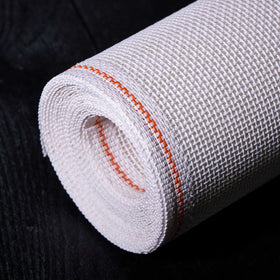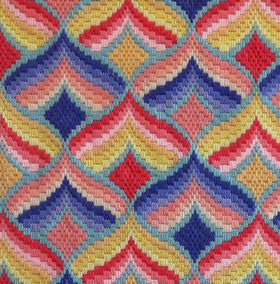

A Guide to Different Types of Wool for Crafting
A Guide to Different Types of Wool for Crafting
Wool is one of the most versatile and beloved fibers in the crafting world. Whether you’re knitting, crocheting, felting, or weaving, the type of wool you choose can make a significant difference in the outcome of your project. With a variety of wool types available, each with unique characteristics, selecting the right one can sometimes feel overwhelming. This guide will introduce you to some of the most popular types of wool used in crafting and help you understand their qualities and best uses.
1. Merino Wool
Origin: Merino sheep, primarily from Australia and New Zealand.
Characteristics: Merino wool is renowned for its softness and fine texture, making it a top choice for garments worn next to the skin. It has excellent elasticity, breathability, and moisture-wicking properties. Merino wool is less likely to cause itching, making it ideal for baby items and sensitive skin.
Best For: Clothing, accessories, baby items, and fine knitting or crocheting projects.
2. Shetland Wool
Origin: Shetland sheep from the Shetland Islands in Scotland.
Characteristics: Shetland wool is a bit coarser than Merino but still soft enough for wearable items. It's known for its warmth, durability, and natural elasticity. The wool comes in a wide range of natural colors, including black, grey, brown, and white.
Best For: Outerwear, traditional Fair Isle knitting, and items requiring structure and durability.
3. Icelandic Wool
Origin: Icelandic sheep.
Characteristics: Icelandic wool is unique because it consists of two layers: a soft, insulating undercoat and a coarser, water-resistant outer coat. This combination makes it both warm and breathable, perfect for cold climates. It has a slightly rustic feel and is typically used in traditional Icelandic sweaters (Lopapeysa).
Best For: Outerwear, sweaters, and items designed for outdoor use in cold weather.
4. Alpaca Wool
Origin: Alpacas, primarily from South America.
Characteristics: While not technically wool, alpaca fiber is often included in the same category due to its similar uses. Alpaca wool is incredibly soft, lightweight, and warmer than sheep’s wool. It’s hypoallergenic, making it suitable for people with wool allergies. However, it lacks the elasticity of sheep’s wool, so it’s often blended with other fibers for structure.
Best For: Scarves, shawls, lightweight garments, and luxury items.
5. Cashmere
Origin: Cashmere goats, primarily from the Himalayan region.
Characteristics: Cashmere is one of the most luxurious fibers available. It’s exceptionally soft, lightweight, and warm. Cashmere wool is more delicate than other types of wool, requiring gentle care and often used in small amounts in blends to maintain durability while adding softness.
Best For: High-end garments, accessories, and items intended for close contact with the skin.
6. Mohair
Origin: Angora goats.
Characteristics: Mohair wool is known for its sheen, durability, and lightweight nature. It has a slight halo effect due to the fine, long fibers, which adds a soft, fuzzy texture to the finished project. Mohair is also highly resilient and often blended with other fibers to add softness and luster.
Best For: Sweaters, shawls, and projects where a soft, fluffy texture is desired.
7. Bluefaced Leicester (BFL) Wool
Origin: Bluefaced Leicester sheep, primarily from the UK.
Characteristics: BFL wool is soft, lustrous, and has a slight sheen. It’s stronger than Merino but still soft enough for next-to-skin wear. The wool has a slight drape, making it a good choice for projects that require some fluidity without losing structure.
Best For: Garments, accessories, and projects that require both softness and durability.
8. Corriedale Wool
Origin: Corriedale sheep, from New Zealand and Australia.
Characteristics: Corriedale wool strikes a balance between softness and durability. It’s slightly coarser than Merino but still suitable for many types of wearable projects. It has good elasticity and stitch definition, making it a favorite among knitters and spinners.
Best For: Garments, blankets, and felting projects.
9. Lambswool
Origin: The first shearing of a young sheep, typically under seven months old.
Characteristics: Lambswool is soft, elastic, and resilient. It’s softer than regular sheep’s wool because it comes from the first shearing when the wool is finer and less coarse. Lambswool retains warmth well and is often used in high-quality woolen garments.
Best For: Sweaters, baby clothes, and soft accessories.
10. Superwash Wool
Origin: Various sheep breeds, treated with a chemical process.
Characteristics: Superwash wool has been treated to prevent felting, making it machine-washable. It retains the softness and warmth of natural wool but can be more convenient for everyday use, especially in items that require frequent washing.
Best For: Everyday garments, baby clothes, and items that need easy care.
Choosing the Right Wool for Your Project
When selecting wool for your craft project, consider the following factors:
- Texture and Softness: For garments worn close to the skin, softer wools like Merino or Cashmere are ideal.
- Durability: For items that will experience heavy use, such as blankets or outerwear, choose more durable wools like Shetland or Corriedale.
- Elasticity: Wools with good elasticity, such as Merino, are better for projects that need to retain shape, like sweaters.
- Warmth: For winter projects, consider wool with excellent insulation properties, like Icelandic or Alpaca wool.
Conclusion
Wool is a diverse and versatile material that can be tailored to suit almost any craft project. Whether you’re creating a cozy sweater, a delicate scarf, or a durable blanket, understanding the different types of wool available can help you choose the best material for your needs. Experimenting with different types of wool can also be a fun way to discover new textures and finishes, enriching your crafting experience. Happy crafting!




